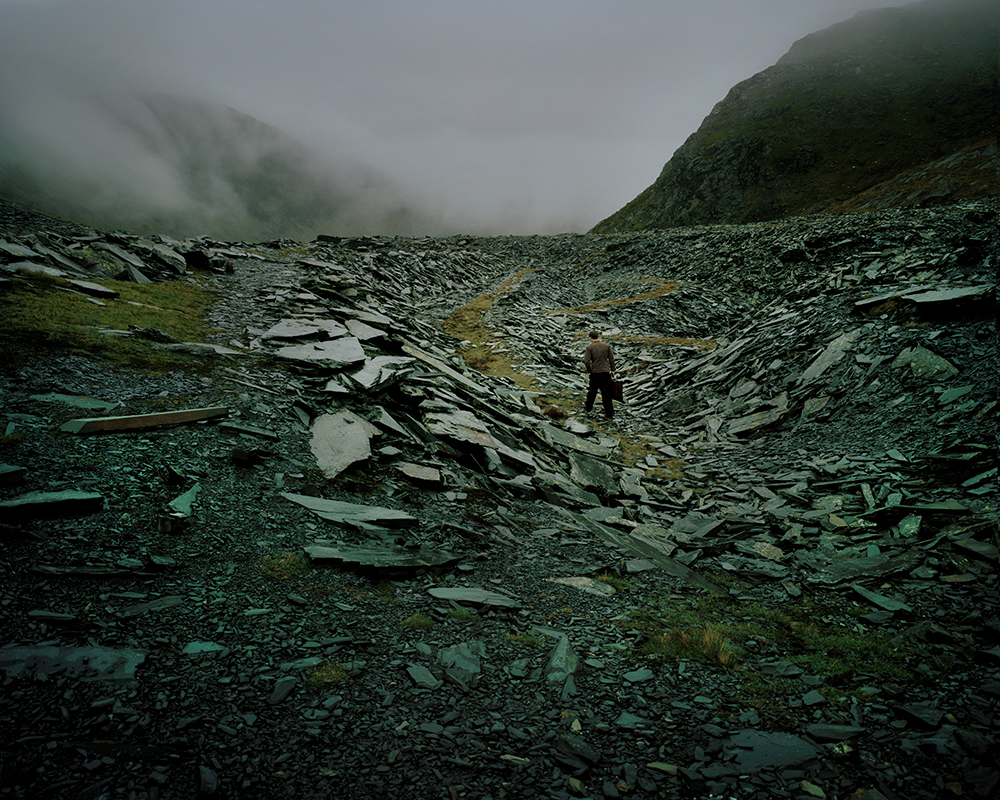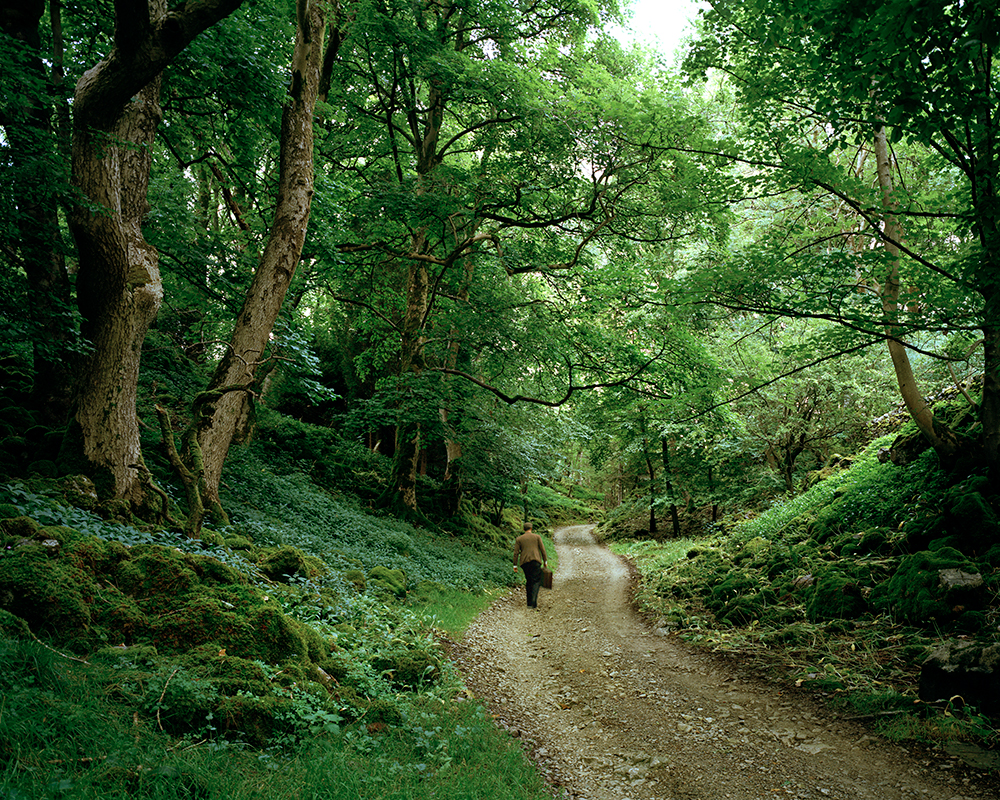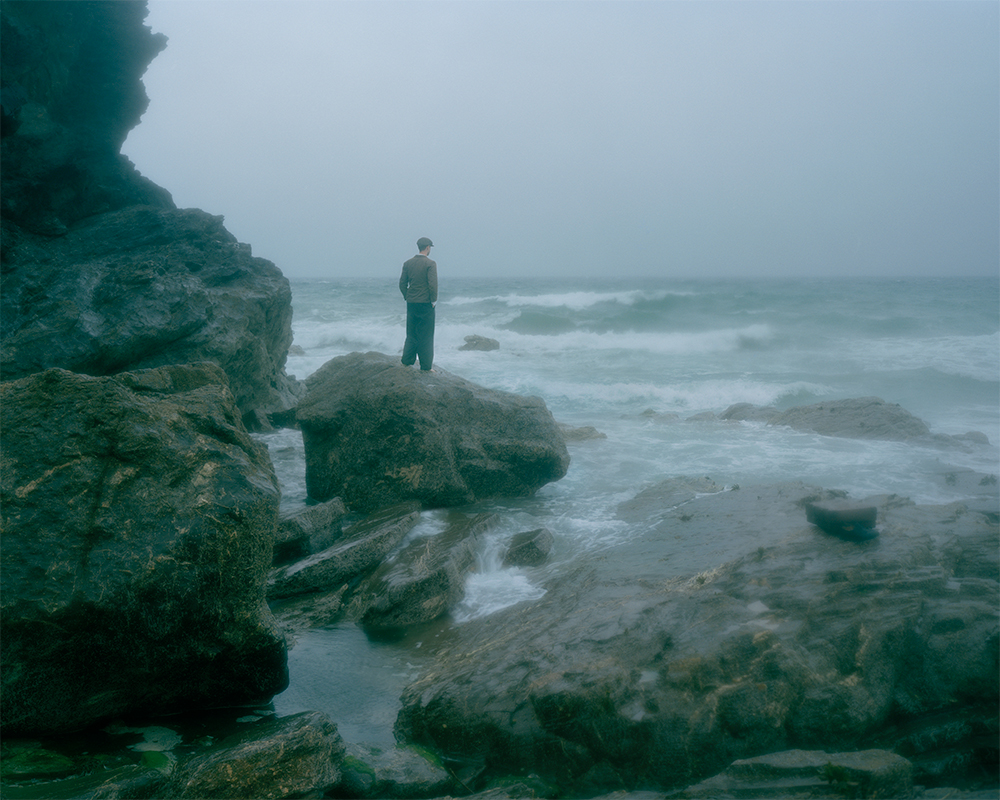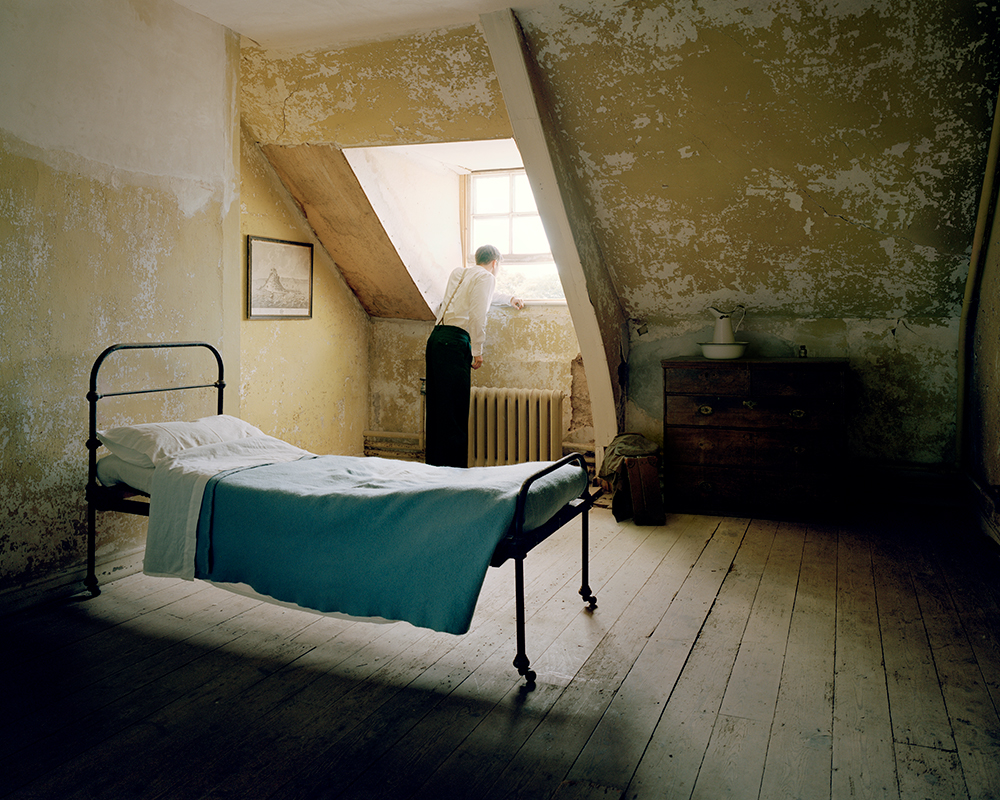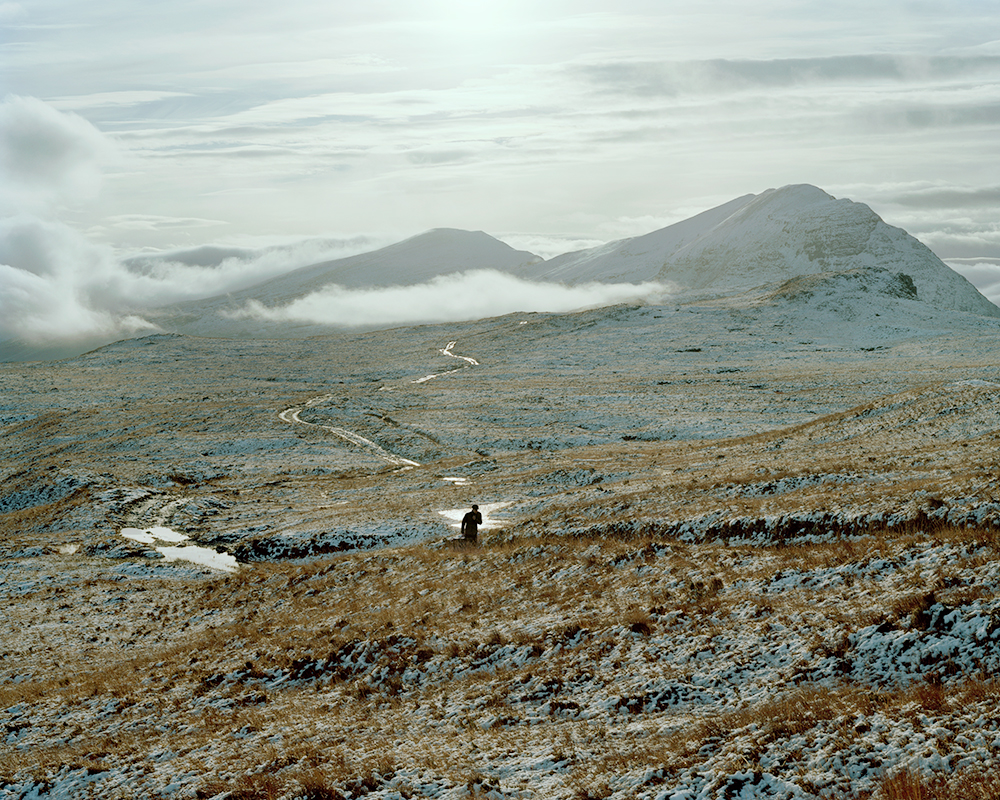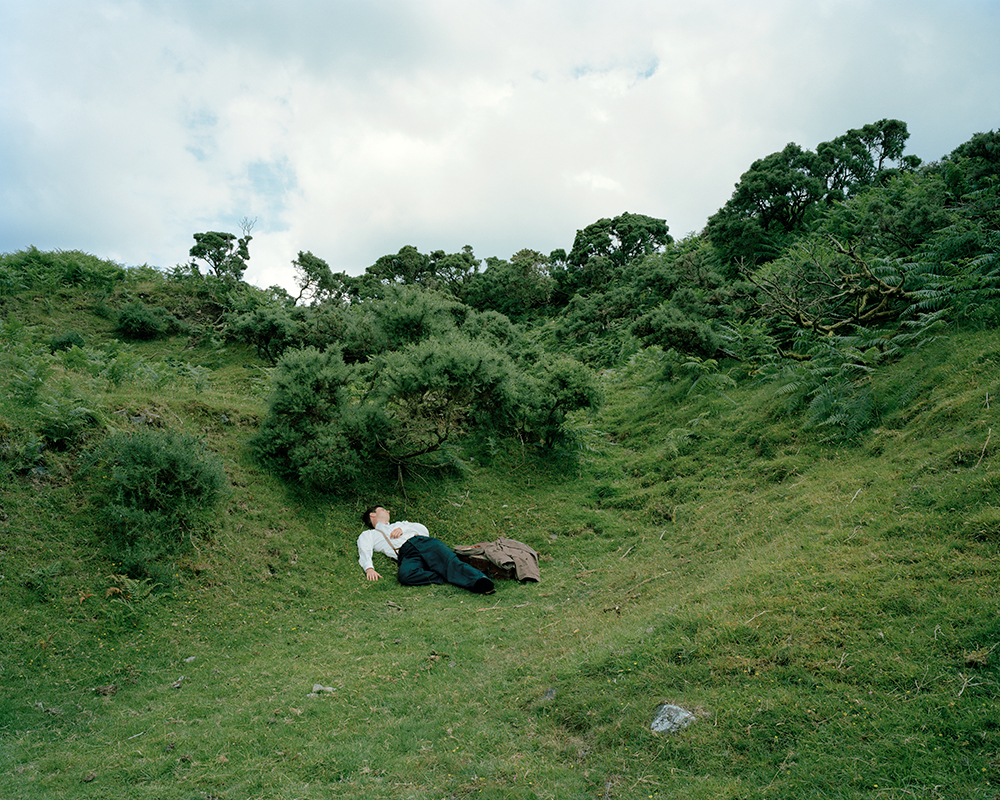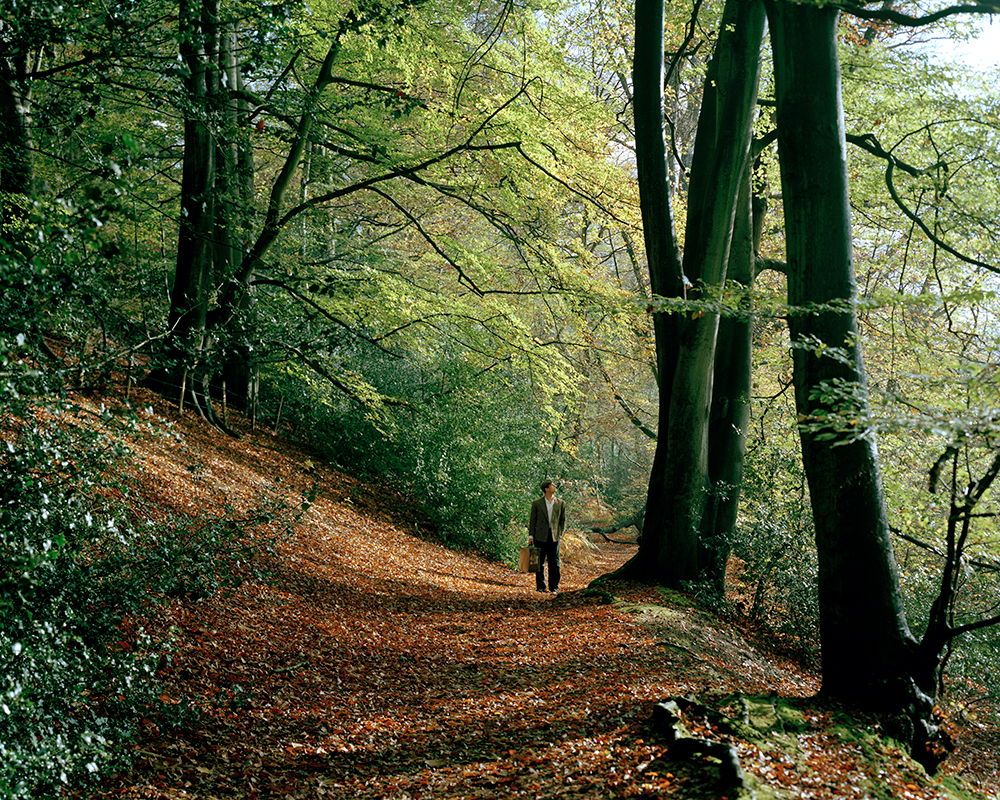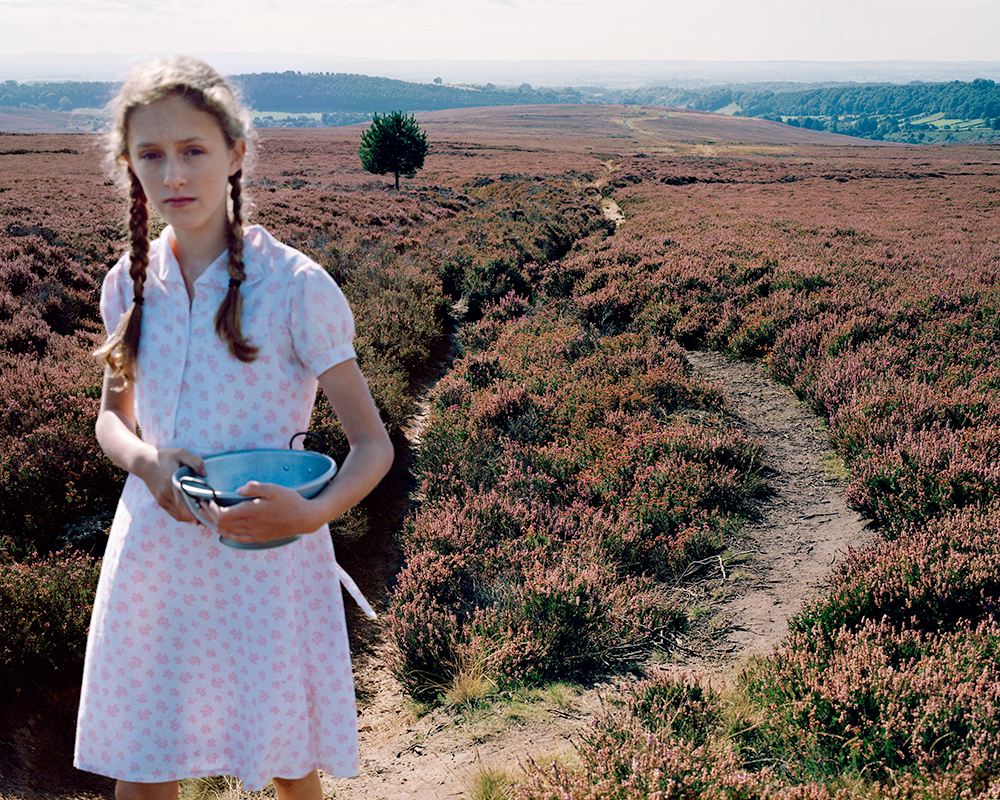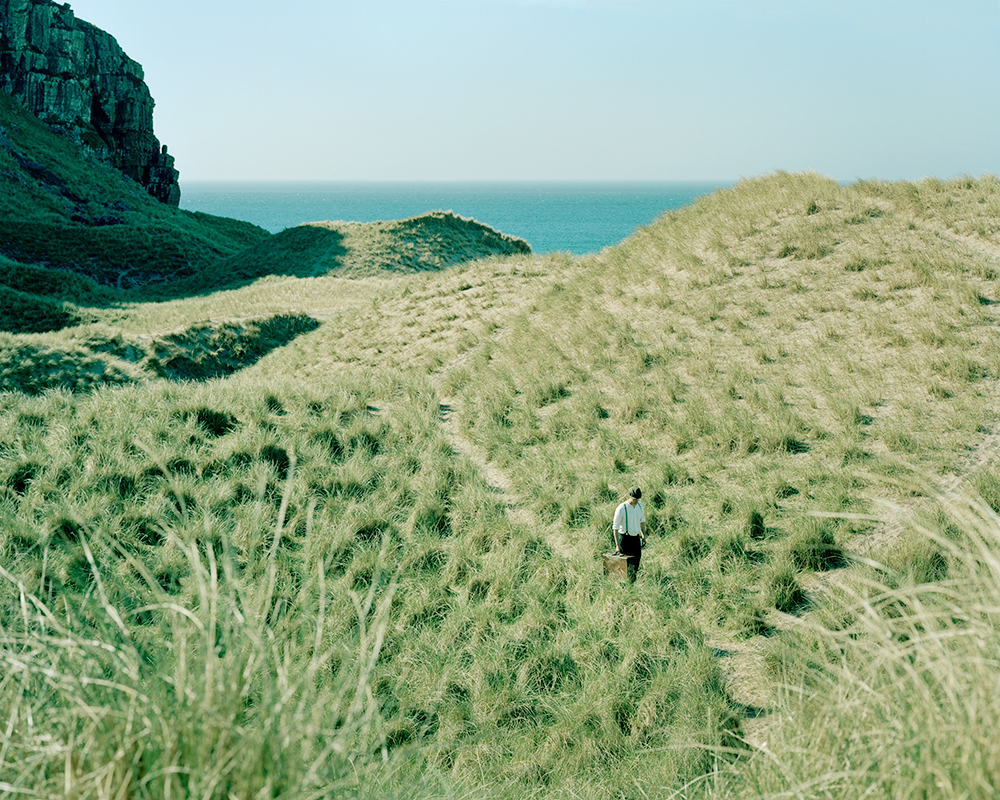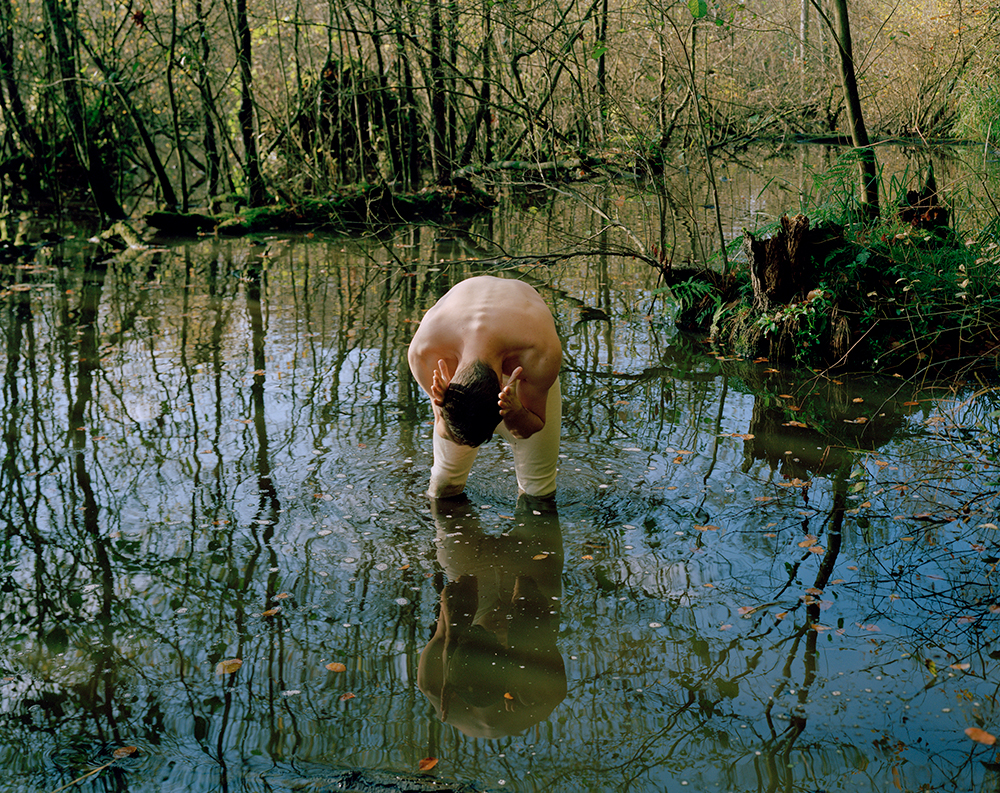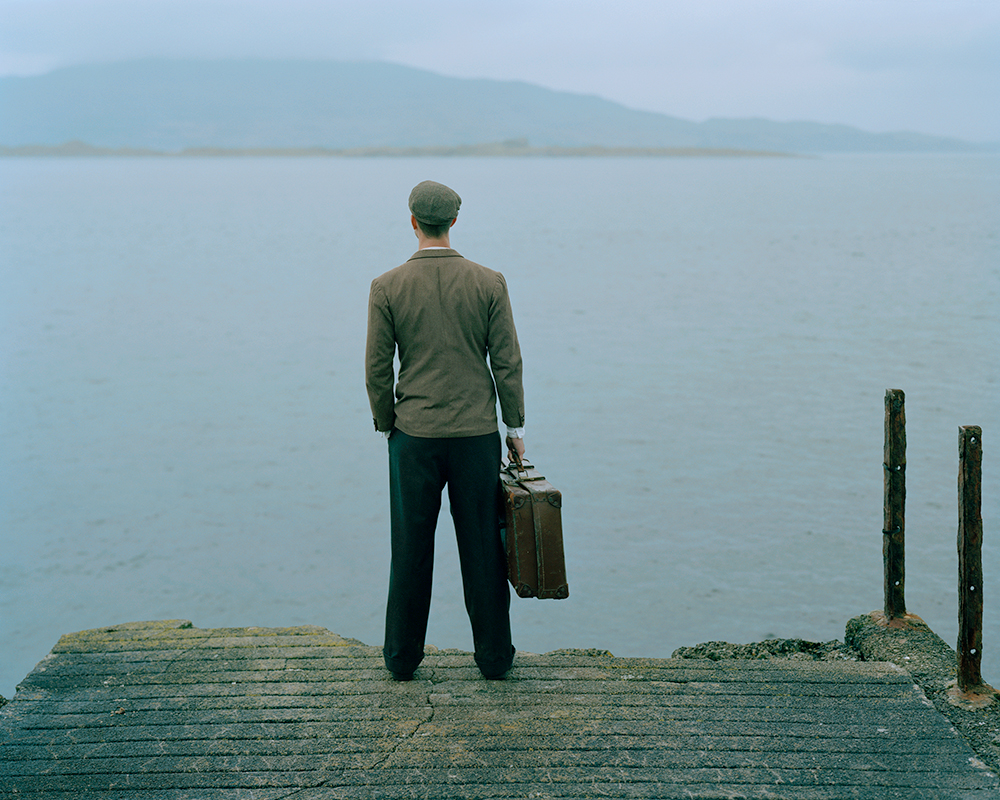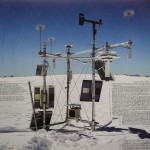Lottie Davies: Quinn
Lottie Davies takes us on a multi-dimensional journey through the magnificent landscapes of rural Great Britain using her “everyman” stand-in, Quinn, on a metaphorical exploration to find himself and his place in the world. Her recreation of a post-war era employs large format images, video segments, a written & audio diary and miscellaneous ephemera to immerse the viewer in Quinn’s world and mindset. The project keeps one guessing as to the hero’s progress toward an unknown destination as well as his isolation and apparent loneliness as he makes his way ever northward. The two-dimensional images just tell part of his story serving as markers along his road of self-discovery. The project demands that the viewer work to put the diverse pieces of the psychic and photographic puzzle together by reading or listening to the character’s diary that accompanies the images. This narrative text forms part of exhibition installations and is part of the book “Quinn”, published recently at Mutton Row Books. The diary text allows one to further explore Quinn’s motivations and intentions.
According to Davies’ project statement, this is the fictional story of a young man, William Henry Quinn, who is walking from the south-west of England to the far north of Scotland in post Second World War Britain. Although fictional, the work is in response to the real experiences of young men and women post- trauma, both in the early twentieth century and now. The life changes imposed on each generation by conflict and global socio-economic collapse as well personal tragedy produces a constant stream of people left untethered, travelling in any way they can to find a new home, a new purpose and to rebuild their place in the world.
As we follow Quinn on his odyssey, we travel with him on a physical and metaphorical journey mediated by the British landscape, which is both changed and unchanged since the 1940s. The ancient byways along which he and others have travelled remain as they were then, and yet with the immutability of change and the unremitting nature of time passing, lives and memories change and fade. As we walk alongside Quinn and learn his story, we may perhaps come to understand more about our own search for existential meaning and ponder our own purpose in life.
The work employs various tools created to be viewed and read side-by-side, to take the viewer through a multi-dimensional experience; much like reading a novel, visiting the theatre, and going to the cinema at the same time. Quinn is a meditation on grief, loss, loneliness, the human search for meaning, and the possibility of redemption through time and landscape.
Lottie Davies was born in Guildford, UK, in 1971. After a degree in philosophy at St Andrews University in Scotland, she moved back to England and has since been based in London and Cornwall as a photographer, artist and writer.
Davies has won recognition in numerous awards, including the Association of Photographers’ Awards, the International Color Awards, and the Schweppes Photographic Portrait Awards. Her work has garnered international acclaim; Quints (‘Memories and Nightmares’) won First Prize at the Taylor Wessing Photographic Portrait Awards 2008 at the National Portrait Gallery in London, Viola As Twins won the Photographic Arte Laguna Prize in Venice in 2011, and she won the Young Masters Art Prize in 2012.
Davies’ work is concerned with stories and personal histories, the tales and myths we use to structure our lives: memories, life-stories, beliefs. She takes inspiration from classical and modern painting, cinema and theatre as well as the imaginary worlds of literature. She employs a deliberate reworking of our visual vocabulary, playing on our notions of nostalgia, visual conventions and subconscious ‘looking habits’, with the intention of evoking a sense of recognition, narrative and movement. Sandy Nairne of the National Portrait Gallery in London has described Davies’ work as “brilliantly imaginative”.
Your main character and virtually only character in the project, “Quinn” is a young male wandering the countryside through pristine landscapes. Why did you choose a male character as the personification of a metaphorical journey through the British landscape and why did you choose the immediate post-war period as a timeframe?
‘Quinn’ is indeed set in the past, but it is as much about today as it is about then – it is about all people who find themselves cast adrift in life. I often set my stories in the past, principally because I try to make them as accessible as possible, and if I were to make them contemporary, there are a myriad of unavoidable social cues which I feel would interfere with that. For instance, what clothing would the characters wear? Everything is branded these days, and anything unbranded is also a statement. What hair style? What region and accent would be implied? In Britain particularly we have such a keen sense of class, social status, education, relative wealth, and so on – I try to minimise that by putting my characters in as neutral a past setting as I can. I chose the immediate post-war period for ‘Quinn’ because it was a time of immense upheaval for Europe and the majority of the globe – many people’s understanding of the world and their place in it had been entirely destroyed by the war, and by the ending of the war itself. There was a need to adjust to a new way of living – as societies and as individuals. And now, tragically we find ourselves once again in a similar state of re-evaluation and with a need to redefine ourselves as a global community.
Quinn’s story, while he is a British (English, even) young man, is the story of so many people whose lives have been disrupted by things beyond their control and which they were not expecting – conflict, economic circumstances, famine, loss of family and friends, redundancy, injury… The crowds of families and young men crossing the Mediterranean and fleeing war in the Middle East is proof that these kinds of journeys are a constant. My choice to make Quinn English is of course because it is my culture and I am embedded in it; I understand it on an instinctive and almost visceral level as well as an intellectual one. And my audience is likely to be western, not Middle Eastern or African, so I wanted to make a character who was recognisable to that audience as ‘one of us’. Quinn’s story is universal, and I like to employ nostalgia to try to create a sense of recognition in the audience – so that the underlying story comes through unencumbered by a social disconnect.
I chose a male character partly just through instinct and inclination, and partly because a young woman walking alone at that time in history (or in fact at any time) would have had a very different experience to a man, and the audience’s perception of her journey would, I suspect, have been fraught with concern for her vulnerability in that kind of situation. The character of Quinn is intended, as much as possible, to be an ‘everyman’ or ‘everywoman’ (can one say ‘everyperson’?), and as such needed to be as unburdened by preconceptions or impediments to suspension of disbelief.
The character, Quinn, seems to hardly engage with his surroundings including the young girl he passes in one sequence. Is this sense of anomie and isolation intentional? If so, to what end?
It is indeed intentional, and when one reads or listens to the diary narrative, it becomes clear that Quinn is disengaged from his surroundings and other people as he attempts to come to terms with his recent past and what his future might hold. He is unsure of how to interact with the people around him and is coping with survivor’s guilt as well as the rejection that so many young men returning from the war were confronted with, in addition to experiencing PTSD. The interaction with the young girl Rose is his first attempt to confront this sense of dislocation, and while he does it in a cack-handed way, she senses his sadness and tries to give him some comfort by giving him the bunch of heather. A child’s kindness can work wonders for the broken-hearted, I feel.
The project combines video clips with large format images. The videos have no dialogue and provide only the sounds of nature. There is a sense of journey but to what end?
The journey is a process rather than trying to get to a destination. Quinn is walking because he is lost and he has no direction – putting one foot in front of the other is the only thing that makes sense. In modern terms we might call it some kind of walking therapy, but at that time there were many young men demobilized with no home or family to go back to and who became semi-itinerant. There are young men like Quinn all over the world now, but we tend not to see them.
How did you make the choice between a scene depicted by video versus a large format photo? What specific factors influenced your decisions in this choice?
That is always a difficult choice! When I was making the work I had an idea that both would appear side by side, and sometimes they do – but mostly that depends on the installation, and what best suits a particular space, or that particular telling of the story. The photographs and video works are often complementary and sometimes interchangeable, but what I absolutely love about Dean Pavitt’s design of the book is the way he managed to include the video and stills and give equal weight to both – he’s such a great designer; I count myself very fortunate to have been able to work with him.
Much of your current and previous work is filled with a sense of nostalgia and loss. Where are the roots of this sentiment in your life?
For nostalgia, see above – I find it useful for pulling at my audience and trying to bring them into the stories – I hope that people think ‘have I seen this before somewhere? It feels familiar in some way’. Loss – I suppose I feel that life is a process of gaining some knowledge and understanding and losing innocence along the way. I also have a sense of the tragedy that we (humanity) seem to never learn from the terrible things that we experience and inflict upon others – we seem condemned to repeat this, generation after generation. I find this enormously sad. And now we have become so self-involved that we are destroying the very planet on which we live. We are a destructive species and create loss everywhere.
How would you describe your evolution as a photographer and videographer?
If I can be flippant, I would describe it as a very messy work in progress! It’s all been, and continues to be, an adventure, where I’m curious to find out what might happen next. I never set out to follow a particular path within photography, and I’ve very much responded to opportunities, suggestions, inspiration and happy accidents as they occur. I still shoot commercially, I shot editorial and travel work for many years which I loved, and I now teach part-time which I find exciting and deeply rewarding. All of these things feed into what I make. Since I didn’t study photography, or art at all in any formal way, I discovered my own way to a place where I could think about what I might want to make, and why – and that evolution is ongoing.
What’s next for Lottie Davies?
I need a break! Publishing the book and mounting the exhibition in London was amazing and exhilarating, but also quite exhausting, so I’m taking the rest of the summer to rest and regroup, to think about just being in the world in my little corner of it (I find it very important to take periods of time to reflect, and I’m trying to get better at doing that!). I hope to take ‘Quinn’ further afield such as the to the US and continental Europe, whilst this year the next event will be in North Wales in October. ‘Quinn: Until the Land Runs Out’ will be exhibited as part of The Northern Eye Festival, which should be very interesting – the curator of the Oriel Colwyn gallery, Paul Sampson, is always incredibly creative with installation and I am hugely looking forward to working with him to create a new experience of Quinn’s journey there (see press release). And then I will be part of Books On Photography in Bristol, where there will be a book signing and for me, an opportunity to finally catch up with my friends and colleagues in the industry who I’ve barely seen for two years! There is much news to catch up on and many plans to hatch.
Long term, the experience of creating gallery-specific sets and installations with ‘Quinn’ has made me keen to explore that aspect of my practice – I have ideas for creations in large spaces, where the audience would be taken on intriguing journeys, using photography, video, audio and set-builds. I am also going to spend more time writing, to see where I might take it and where it might take me. We’ll see.
Posts on Lenscratch may not be reproduced without the permission of the Lenscratch staff and the photographer.
Recommended
-
Earth Week: Ian van Coller: Naturalists of the Long NowApril 22nd, 2024
-
Earth Month Photographers on Photographers: Tyler Green in Conversation with Megan JacobsApril 15th, 2024
-
Shari Yantra Marcacci: All My Heart is in EclipseApril 14th, 2024
-
Artists of Türkiye: Cansu YildiranMarch 29th, 2024
-
Broad Strokes III: Joan Haseltine: The Girl Who Escaped and Other StoriesMarch 9th, 2024


